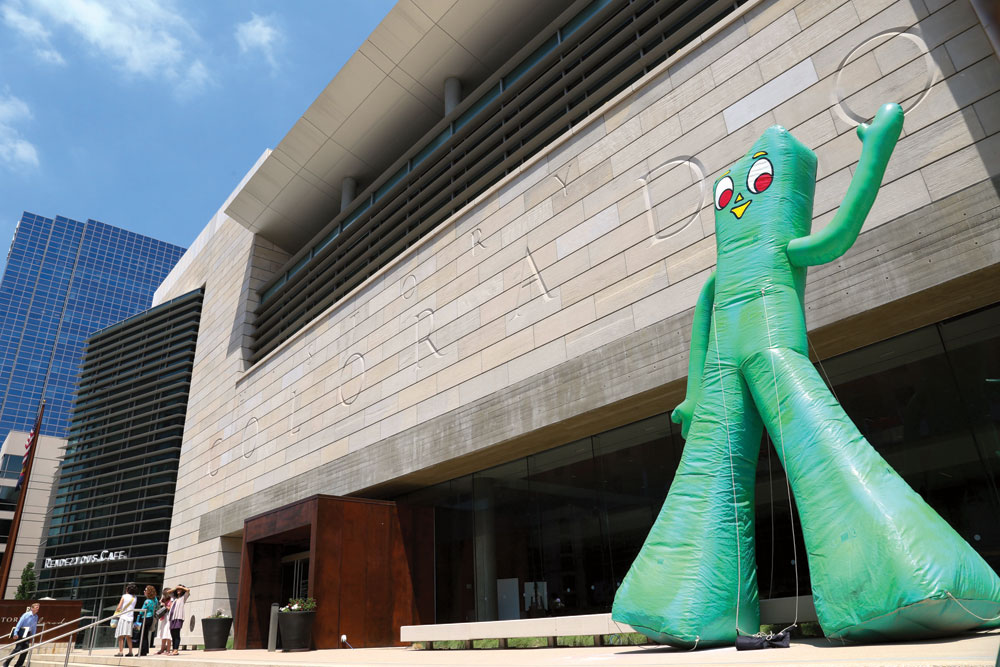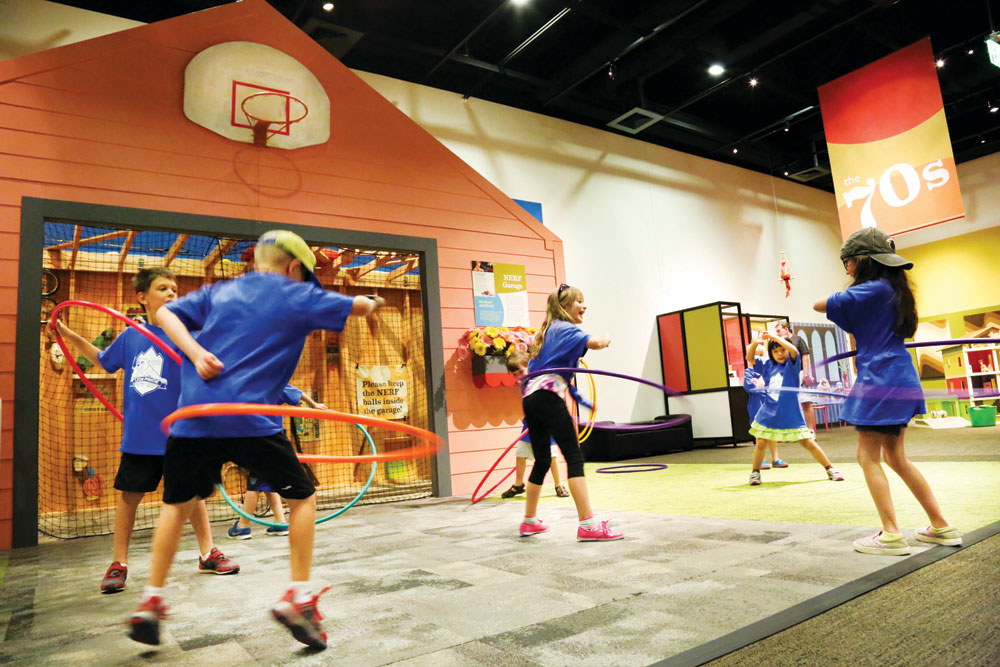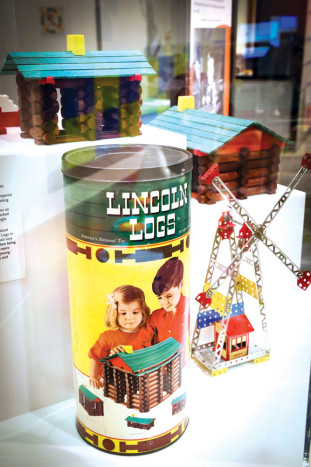
In 1953, Art Clokey, who studied film at the University of Southern California, created a three-minute film that featured moving and expanding lumps of clay set to the soundtrack of Disney’s Fantasia. He named the movie Gambasia after the muddy clay at his grandparent’s farm he called “gumbo.” The film led to the famous Gumby, shown here outside of History Colorado Center.
The boom of the U.S. toy industry can be tracked back to when soldiers returned home from World War II. The number of babies born drastically increased and homes became more focused on children, hence the emergence of toys. Children will marvel at the difference from today’s toys, the older crowd will reminisce viewing icons of their past, and all will enjoy the often quirky story behind each toy. The toy exhibit was developed by the Minnesota History Center.
Toys of the ‘50s, ‘60s and ‘70s will be on display through October 4. Visit History Colorado Center at 1200 Broadway, or call 303.447.8679.

At the exhibit, kids can explore the different toys and play with hula-hoops in the ‘70s-style garage ‘play zone.’

Even the younger generations may remember this toy that has had a long lifespan. Lincoln Logs came to life when John Lloyd Wright visited Tokyo in 1916 with his father, architect Frank Lloyd Wright. John became inspired by the construction of his father’s Imperial Hotel, which was built by stacking beams into place. Upon returning home, John used the concept to invent Lincoln Logs.

A tiny start-up company in Minnesota created one of the most popular toy trucks in history, the Tonka Truck. At the time, the U.S. was booming—highways, skyscrapers, malls, suburbias. Tonka was a symbol of growth.

Bugs became cool when Herb Schaper created the Game of Cootie, played with a brightly colored plastic bug. Schaper wittled the first Cootie bug out of a wooden fishing lure. The bug reflected the lice-infested trenches World War I soldiers faced during the war. Surprisingly, kids loved the game and Dayton’s department store sold more than 5,000 games.



0 Comments